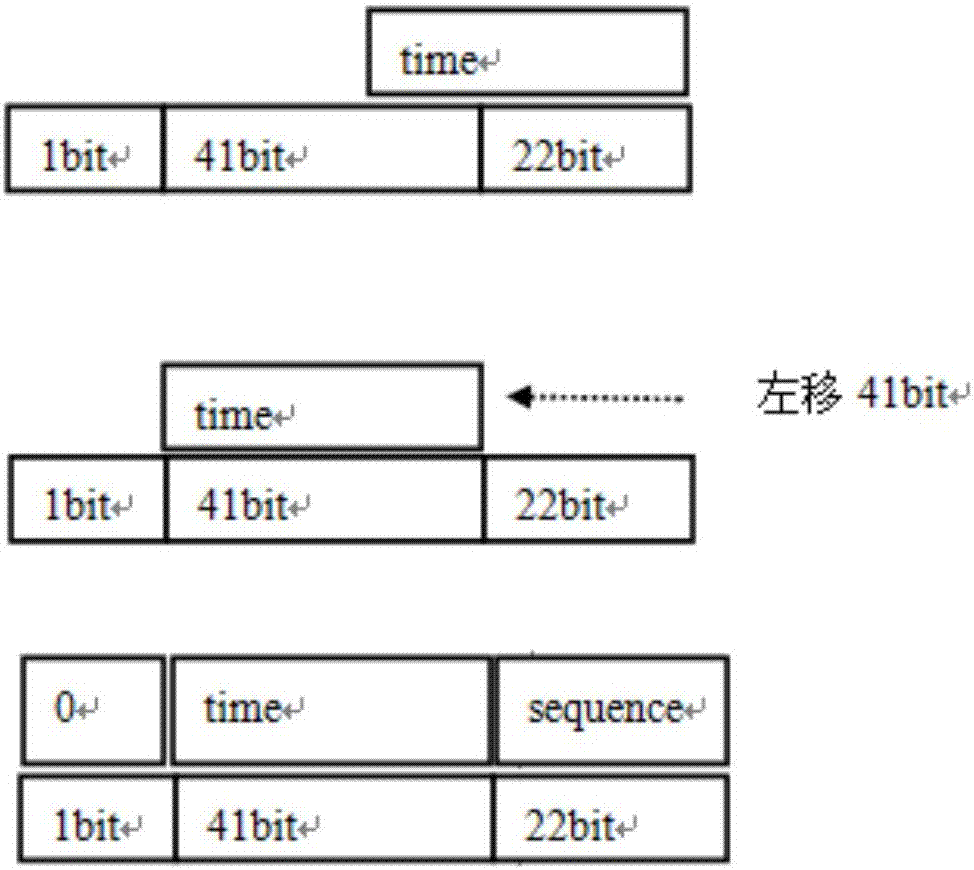Method for generating unique ID in distributed system
A distributed system, the only technology, applied in the field of distributed systems, can solve the problems of IDs are not sorted, cannot meet the needs of multi-agent deployment, and has a single point of risk, etc.
- Summary
- Abstract
- Description
- Claims
- Application Information
AI Technical Summary
Problems solved by technology
Method used
Image
Examples
Embodiment 1
[0044] Suppose the APPID number on a host is 14678502, the host IP address is 192.132.2.65; the timestamp is 150034382; the auto-increment serial number is 6, then the ID generation process is as follows:
[0045] Carry out high 64bit calculation: shift the APPID number on the host to 14678502 to the left by 32bit, divide the ip address into: 192, 132, 2, 65, and perform displacement filling respectively.
[0046]
[0047]
[0048] OR the APPID with the ip address:
[0049]
[0050] Assign the lower 64 bits: the first position is 0, the timestamp is shifted left by 22 bits,
[0051]
[0052]
[0053]
[0054] OR the timestamp with the auto-incrementing sequence number
[0055]
[0056] Splice the high 64bit and low 64bit together to generate a unique ID: 6304368927414739221705276340000006.
PUM
 Login to View More
Login to View More Abstract
Description
Claims
Application Information
 Login to View More
Login to View More - R&D
- Intellectual Property
- Life Sciences
- Materials
- Tech Scout
- Unparalleled Data Quality
- Higher Quality Content
- 60% Fewer Hallucinations
Browse by: Latest US Patents, China's latest patents, Technical Efficacy Thesaurus, Application Domain, Technology Topic, Popular Technical Reports.
© 2025 PatSnap. All rights reserved.Legal|Privacy policy|Modern Slavery Act Transparency Statement|Sitemap|About US| Contact US: help@patsnap.com



